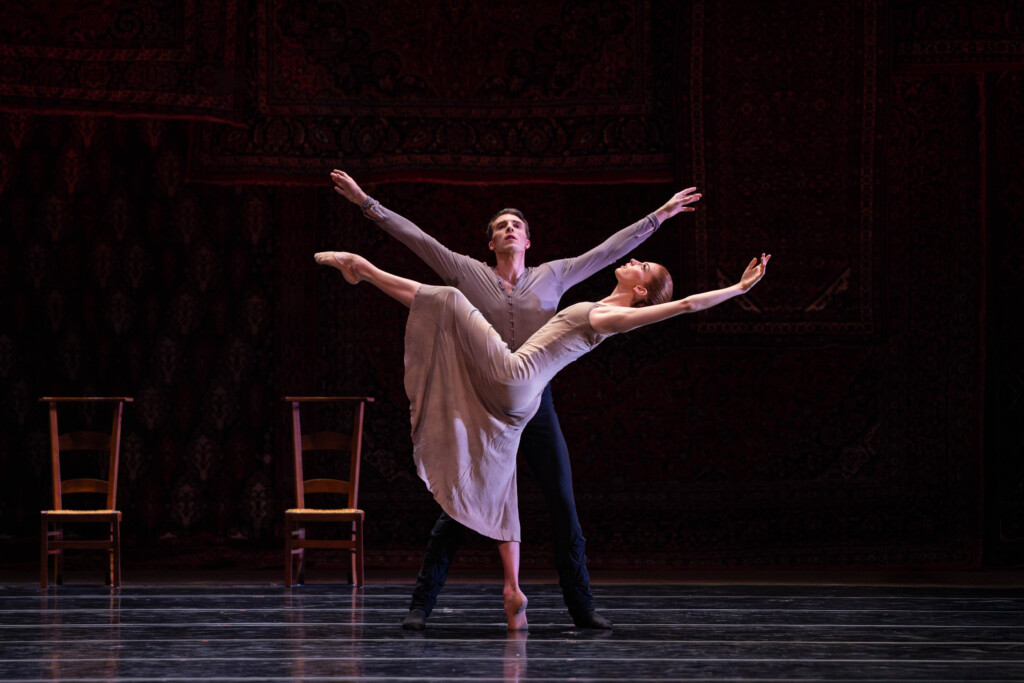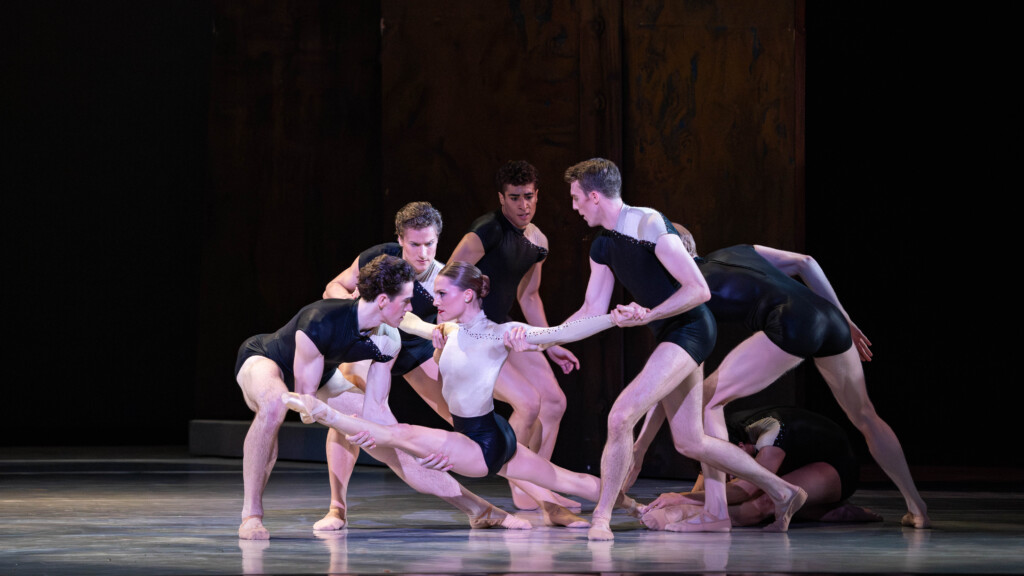If there was an overarching theme to the astonishing triple bill in Ballet West’s production that culminated in the riveting performance of The Rite of Spring, it would be contemplation, continuity and connection for humans living in a largely symbolic world.
The opening night performance of works by three choreographers featuring the music of Stravinsky brought the audience to their feet each time. With spectacular performances from Ballet West dancers and the pit orchestra, it was a perfect manifestation of the extraordinary sisterhood of dance and music in total congruence.

In terms of timeline, the program started with Stravinsky’s most recently composed work and moved backward chronologically. This revealed an astute understanding of how the composer’s musical language of dance had matured from roots that had already sprouted during his younger years.
The opener was the Utah premiere of Symphony of Psalms (1930), featuring the 1978 choreographed version by Czech choreographer Jiří Kylián. Featuring 16 dancers, the work, even while it suggests a liturgical context, expands into a cosmopolitan expression of spiritual theater. As noted in an earlier preview published at The Utah Review, Serge Koussevitsky commissioned the music to mark the Boston Symphony’s golden anniversary, just about the same time that Stravinsky had rediscovered his Russian Orthodox Church faith. The score takes three Latin texts from the Book of Psalms, the last being Aleluia from Psalm 150.

Against a magnificent vertical patchwork of Oriental carpets, the dancers recreate Kylián’s stunning choreographic architecture, augmented by the orchestra and a 32-voice choir representing many of the region’s finest singers. The most impressive movements occur when the dancers mirror each other, along with a domino effect triggered by a fleeting moment of delay. The four couples — Katlyn Addison and Hadriel Diniz, Amy Potter and Loren Walton, Anisa Sinteral and Dominic Ballard, Lillian Casscells and Tyler Gum — highlight the intricate counterpoint with geometric and angular biases that parallel the octatonic scales, ostinato rhythmic phrases and the oscillation patterns that replicate the rhythmic and harmonic elements of Byzantine church bells.
The dancers are harmonized to the equally exceptional performances of the chorus and orchestra, conducted by Jared Oaks. All the forces rise together in the second movement’s double fugue which provides some of the most complex choreographic architecture. Near the end of the second movement, a spine-tingling moment occurs when the music leads the transition from counterpoint to unison, manifested precisely together on stage and in the pit. For the final movement, the music is the most literal in the work. Stravinsky wrote that he “was inspired by a vision of Elijah’s chariot climbing the Heavens; never before had I written anything quite so literal as the triplets for horns and piano to suggest the horses and chariot.”

Photo Credit: Beau Pearson.
A paean to Classical Antiquity, Apollo (1928) choreographed by George Balanchine to the score by Stravinsky, was supple, vivacious and eminently satisfying. As the lyre-toting Apollo, Adrian Fry deftly evoked the music’s sumptuous sonority coming from the Ballet West Orchestra’s strings and its delicate rhythmic language. This ballet pops in its punchy character, from the moment when Leto (Victoria Vassos) gives birth to Apollo, to the tender care by the handmaidens (Kye Cooley and Maren Florence) and finally, and most prominently, in the solos by the three Muses who are Apollo’s half-sisters: Calliope (Lillian Casscells), Polyhymnia (Rylee Ann Rogers) and Terpsichore (Katlyn Addison).
Making its third appearance in a Ballet West production, Nicolo Fonte’s The Rite of Spring undeniably brought the evening’s most robust response from the audience. Fonte’s interpretation of this Stravinsky warhorse, which Ballet West gave its world premiere in 2014, has since undergone a metamorphosis. He eliminated the character of a boy that appeared in the two earlier productions and stripped a good amount of its initial narrative trappings, while keeping the same set and costumes.
As mentioned in a preview at The Utah Review, Fonte had refreshed his artistic connections to the pure essence of Stravinsky’s score. While there are exceptional solo moments featuring David Huffmire, Amy Potter and Nicole Fannéy, the work’s fundamental ensemble nature with 20 dancers builds upon the music‘s unique paradoxical expressions of rhythmic buoyancy and petrifying immutability, which go back and forth relentlessly in every section. What emerges is an effectively looser, broadly interpretable portrait of a community, constantly wrestling with itself, held back by suspicion, mistrust and fear of breaking from a status quo but also willing, even if tentatively, to find common space to refresh itself spiritually.

One cannot overestimate the congruence that Fonte achieved with the music, evidenced in a superb performance by the orchestra. The company achieved what Stravinsky likely had imagined. The composer regularly wrote at the piano, and, as Pieter C. van den Toorn wrote in his outstanding 1987 book Stravinsky and The Rite of Spring: The Beginnings of a Musical Language, he would tell the bassists and timpani players during rehearsals that they should see themselves as the pianist’s left hand, while the rest of the orchestra represents the right hand. With plenty of breathing space to spare in handling the complexities of turbulent shifts in musical meter and pulse, this Ballet West performance never verged on vulnerabilities of frenzy and chaos. Instead, in ideal lucidity, dancers and musicians alike found the precise and most relevant rhythmic sensibilities in The Rite’s music.
Three performances remain later this week. For more information, see the Ballet West website.

